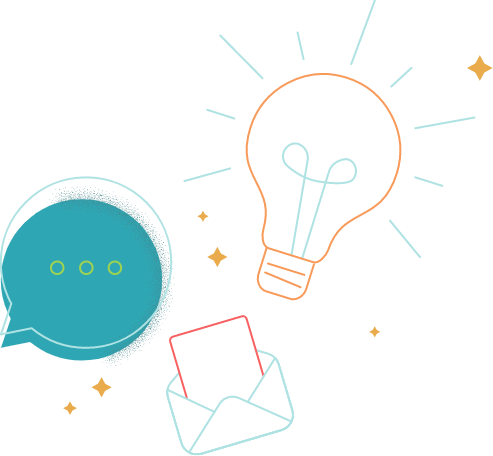If you’ve ever tried asking an AI model to explain itself, you know the irony: half the time, it gives you an answer that sounds deep but is basically the equivalent of “Artificial intelligence … is … AI.” Not super helpful. And when you’re staring down a seven-figure marketing budget, a vague definition isn’t going to tell you where to put your chips. Meanwhile, generative AI tools attracted $33.9 billion in private investment and keep spreading across data analysis, software development and yes, marketing.
This guide cuts through the jargon and spells out the main types of AI algorithms — generative and its less-flashy siblings — so you can match each one to the right use case, max ROI without the facepalms and train your marketing team so that it sounds smart at parties.
Let’s Start With the Basics: What’s the Big Deal With Generative AI?
To spell out the obvious, gen AI generates, or creates, new things. So the important distinction that separates it from a traditional AI system is that it doesn’t just analyze or classify existing data — it’s the artist, the writer, the coder. And with over 50% of commercial leaders expecting a significant impact of AI applications across lead identification, marketing optimization and personalized outreach, you don’t want to fall into the 27% who feel ill-equipped for what’s coming next.
Subscribe to the ai marketer
Weekly updates on all things ai in marketing.
It’s a Creator, Not a Librarian
Unlike traditional AI models that find and organize information, gen AI models make entirely new information from scratch (although philosophically, one can always argue whether it’s truly new, but that’s a topic for another post).
Think text, images, structured data, even music. While traditional AI might tell you which headlines performed best in the past, a generative AI tool will write 50 new headlines for you to test right now.
Context Is King
To allow for this mass production of coherent and contextually relevant outputs, AI technology relies on massive datasets, fed into transformer or large language models (LLMs), to understand relationships between concepts. This is why tools like contentmarketing.ai can take complex creative briefs and apply brand voice guidelines to produce content that actually sounds like your company wrote it, not a robot.
The Art of the Prompt
Where Brafton’s platform depends on briefs, other AI solutions will need you to provide that context through prompts — at least if you’d like your content to be halfway decent.
Output quality depends entirely on input quality. Feed any model vague instructions like “write an ad,” and you’ll get generic garbage. Don’t blame the AI, though. You’ve seen the same phenomenon in high school when Tommy explained who killed the mockingbird, because he didn’t read the book. Human intelligence can be just as embarrassing as a generative AI model at any specific task, but that doesn’t automatically mean it’s weak AI.
Give your generative model detailed briefs with target audience insights, brand voice and specific objectives, and suddenly you’re looking at content that could fool your own copywriter.
Tool Examples
Platforms like contentmarketing.ai are built for marketing teams that want more than just “content on demand.” They integrate with brand guidelines, apply rules from briefs and generate draft-ready assets that actually sound like you.
ChatGPT, OpenAI’s flagship conversational AI model, is the Swiss Army knife of text generation — equally happy to produce blog outlines, ad variants or customer service scripts on the fly. That is, when your team knows how to prompt generative AI models. We should point out, though, that the OpenAI team constantly adds agents, models and benchmarks that may be relevant to your industry, like in their most recent study to provide LLM-written recommendations during a patient visit.
On the visual side, Midjourney has quickly become a favorite among creative teams for its ability to turn written prompts into highly stylized, imaginative images that would take hours to concept manually. Beyond these, tools like Jasper and Copy.ai offer additional text generation options, while DALL·E 2, Stable Diffusion and GitHub Copilot handle everything from custom imagery to code completion.
The “So What?” for Your VP or CEO
AI may have matured, but not enough to resist the hype all the time. That means, you’ll often find more application-oriented solutions that specifically speak to one target audience, but it’ll be right alongside the tool whose marketing team still yells, “Look! Isn’t it cool what AI can do?” And while that’s impressive, having a quiz generator for teambuilding right next to your compliance checker probably won’t contribute to your business goals, and no matter what you buy, you must not lose sight of those.
So, when shopping around for the next big AI solution, resist the temptation and look for promises like content scalability, sales enablement, product ideation or even campaign management. Think of your team’s technical capabilities and try to augment them.
Meet the Rest of the AI Family
Before Gen AI hogged the spotlight, other forms of machine learning were quietly running your analytics dashboards, your ad targeting and yes — half the internet. They’re not as flashy, but you’d be surprised how often we still depend on them.
Reactive AI: The OG
Reactive AI is like a goldfish, albeit a fancy one. No memory, no learning — just reacting to the here and now. These rule-based systems are built to respond to a specific scenario exactly as programmed.
- Examples: IBM’s Deep Blue chess computer, spam filters, most recommendation engines (although these are slowly shifting toward explainable AI for a better customer experience).
- Ideal applications: Game playing in controlled environments, spam detection, simple classification, productivity apps. Most recently, we also see new applications in reactive PR and newsjacking, although you may not want to copy all of them.
Think of it as the vending machine of AI: insert input, get output. No surprises.
Predictive AI: The Fortune Teller
Predictive AI digs through historical and current data to forecast what’s next. It’s the friend who can guess the next line in your story because they’ve heard you tell it 20 times. Annoying at a campfire, but priceless for small business operations.
- Examples: Google search autocomplete, Salesforce Einstein lead scoring, stock market forecasting tools.
- Ideal applications:
- Demand forecasting: Manage inventory before it becomes a headache.
- Customer churn analysis: Spot which accounts are about to ghost you.
- Lead scoring: Tell sales where to focus first.
For a VP, predictive AI is the ultimate efficiency booster. It gives you quicker access to the information required to make high-level decisions, and sometimes, feeds into the next model to make the decisions for you. At that point, we’re talking about proactive AI agents. But these are usually data-hungry applications in predictive maintenance or healthcare monitoring, so we’ll skip them for now.
The Language Crew: NLP, LLMs and GPTs
We’ve discussed some of these before, but due to the sometimes overlapping terminology, it’s worth grouping them together for clarity. You may find surveys stating that 66% of marketers use AI chatbots, but that doesn’t always tell you everything about the detailed background mechanisms. So these aren’t separate “types” of AI so much as they are the plumbing and electrical wiring behind modern tools.
- Natural Language Processing (NLP): Teaching computers to understand human language. Think Siri, Google Translate, sentiment analysis tools like Brandwatch.
- LLMs: The engine — trained on mountains of text to understand context at scale. Examples: Google’s PaLM 2, Meta’s Llama.
- Generative Pre-trained Transformers (GPTs): A specific LLM architecture made famous by OpenAI. If NLP is “cars” and LLMs are “engines,” GPT is the “Hemi V8.” Models like GPT-3.5, GPT-4 and now GPT-5 power ChatGPT and countless other apps.
For the Marketing Director who likes to geek out: knowing these distinctions makes vendor conversations much less “uh-huh” and much more “actually, what’s your fine-tuning process?”
Pick the Right Tool for the Job
Most organizations want to “build an AI team,” but that’s like saying you want to “hire people.” You wouldn’t ask your copywriter to handle accounting, and you shouldn’t expect one AI tool to solve every marketing challenge.
If you’re looking for the holy grail of AI advertising, don’t expect it under the bridge where you’ll find the one perfect tool. That won’t happen. Most likely, you’ll combine the right AI technologies for specific objectives. For content creation at scale, use generative AI. For analyzing customer behavior and optimizing spend, deploy predictive AI. For real-time decision making and brand safety, rely on reactive AI.
Mind you, you don’t need to implement everything at once, and you can always look left and right at what others are doing, even outside of your industry. Amazon’s advertising ecosystem, for instance, combines all three technologies: reactive AI for real-time bidding, predictive AI for inventory optimization and generative AI for personalized product descriptions. That doesn’t mean you need all of those, but it shows you don’t need to look in some hidden niche to find inspiration.
Understanding the differences between AI categories is the first step before figuring out which ones deserve your investment, because even the smartest AI in the world can’t fix a strategy that doesn’t know what problem it’s trying to solve.






